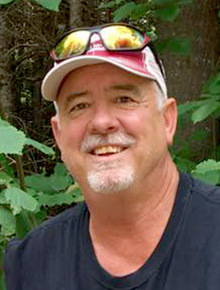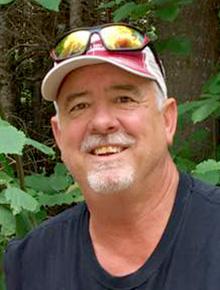
I was sitting in my garage over the New Year’s weekend having a few adult beverages with my neighbor when an all too familiar topic was raised. He expressed his angst about the Minnesota Department of Natural Resources — that they are just too powerful.
I then prodded for some additional details. I asked him to give me an example of what he thought was too powerful. He came up with a very vague example of how hard it was to get a permit from the department to do anything.
I quizzed again and finally he came clean that he had heard at coffee about a guy that wanted to straighten a natural watercourse in order to improve the agricultural drainage in one of his farm fields.
He himself had never had a negative interaction with the department, but he was just voicing a negative view about the DNR permitting process. He did not even know the name of the person who was trying to get the permit.
Straightening a natural water course is illegal in all but the rarest cases, as Minnesota statute prevents it.
What follows is my interpretation of what most of those perceived negative interactions with the department stem from.
I have always admired the Minnesota DNR over most other state agencies. In my dealing with the Minnesota Pollution Control Agency, they use voluntary compliance. There was a person pumping his hog lagoon directly into a natural waterway. They told him to stop. He later buried a tile under ground and continued to pollute the waterway.
After seven or eight years he completed his goal and never paid a penalty or fine. Voluntary compliance is their way to go. What about the resulting pollution?
The DNR has regulations and rules that they actually follow and enforce. When someone wants to act in violation of these rules, they engage individuals, businesses and corporations to adhere to the rules to protect the resources of the state. We, by the way, are “the state.”
The one fact that really seems to evade most people’s understanding of the Minnesota DNR is that all of the rules and regulations they enforce are not their rules. They are rules that have been put in statute by the legislature in Minnesota. If you don’t like a rule or regulation, beating up the DNR is the wrong approach. Politicians in the state are the ones responsible if there is a rule you don’t like.
For example, Minnesota statute dictates how deep a drainage ditch can be dug. When a cleanout is performed, you cannot dig that man-made ditch deeper than it was before. You can only clean it out to the depth determined prior.
Everyone blames the DNR for this issue when all the DNR is doing is upholding the current laws in the state that they themselves did not write or vote into statute.
Wetland drainage laws are another area where the DNR takes a lot of heat, and in those instances, they again are only enforcing the statutes currently in state law. The “just look the other way” method leaves them in dereliction of their responsibilities as protectors of the state’s resources.
If you get caught with 20 walleyes over the limit, you should get a ticket and in my opinion a much bigger fine than currently allowed by Minnesota law. Who would or could disagree with that statement?
An ATV user who destroys state trails or causes destruction to wetlands by destroying habitat should be penalized according to state statute.
Minnesota’s natural resources management should be guided primarily by wildlife professionals and the scientists and biologists that back them up.
Elected officials should tread carefully when they try to divert or change statute from the primary mission of protecting natural resources to providing monetary gain to any Minnesota citizen, no matter who they are.
For the most part, not every single case, the heat the department takes is not of their own making but is as a result of enforcing rules dictated to them by a higher authority.
I can’t speak for every person who works for the DNR, but I can say that — like any profession — the majority of rank and file are great people, with a few rare bad apples.
The issues natural resources managers face today are greater than ever. Developers, wind generation, mining, water related drainage, moose collapse, aquatic invasive species, wolf population management, yearly flooding, pesty beavers … and the list goes on and on.
The next time you hear someone talking negatively about the state’s resource managers, do what I did. Ask for a specific example.
If you get one, please inform that person in a respectful manner that in most cases the DNR is just doing what they are told to do by those who wrote the law and voted it into statute. I have never seen an example where attacking the messenger has ever really worked out right.
Scott Rall, Worthington, is a habitat conservationist, avid hunting and fishing enthusiast and is president of Nobles County Pheasants Forever. He can be reached at scottarall@gmail.com. or on Twitter @habitat champion.



